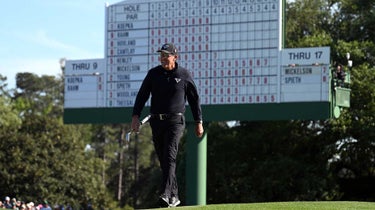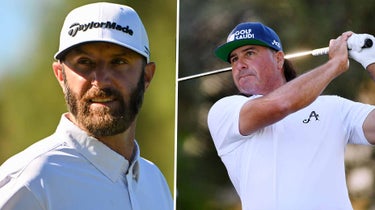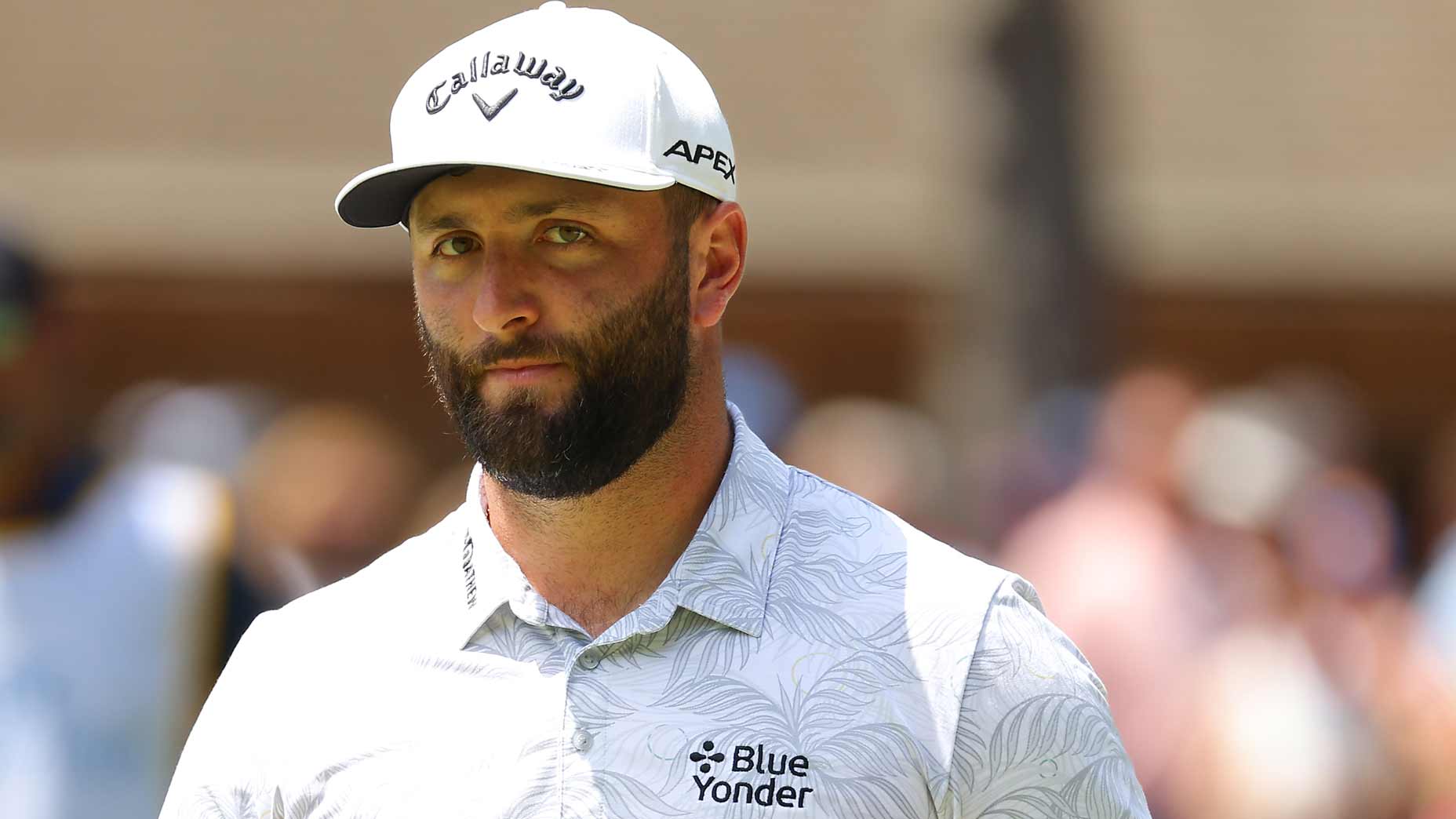
Talor Gooch hits his tee shot on Sunday on the 5th hole at the LIV Golf event in Australia.
Getty Images
Talor Gooch says he’s disappointed after losing an exemption into this year’s U.S. Open — though the decision was not made retroactively, as he believed it to be.
Gooch’s frustration stems from how major championships are determining their player qualifications in the second season of LIV Golf, the Saudi-backed series that has attracted multiple PGA Tour pros, including Gooch. In his case, a move in early February by the USGA for its U.S. Open is significant.
Then, the governing body included this exemption for this year’s Open, to be played in less than two months at Los Angeles Country Club: “Those players who qualified and were eligible for the season-ending 2022 Tour Championship.” Key here are the words “were eligible for.” They were added just this year. And Gooch lost a way into the tournament — he had qualified for the Tour Championship, but did not play in it after being suspended by the PGA Tour after he played in LIV Golf’s first event.
Notably, the adjustment also affects only Gooch — the other players who reached the Tour Championship were all eligible to play in it. And on the 73rd Hole podcast this week, Gooch called the move frustrating.
“Unfortunately, the USGA decided to go in a different direction,” Gooch said on the podcast, “and they retroactively changed that rule, and basically the rule now within the USGA states you have to qualify for the Tour Championship and also be eligible to play, which was obviously disappointing because that changing the rule, it affected one person, which was me.
“And so that was frustrating and tough.”
Gooch, though, inaccurately said the decision was made retroactively. The USGA, through a statement to golf magazine Bunkered, also made the clarification.
“The USGA annually reviews its exemption criteria for all championships, and we did for the 2023 U.S. Open,” the USGA wrote in an email to Bunkered. “Importantly, we provided more clarity to a specific exemption category to reflect that players must be both qualified and eligible for the Tour Championship, beginning with the 2023 U.S. Open.
“The change was not made retroactively, but rather as a part of our annual review process and included within several other changes made to the criteria for the upcoming 2023 championship.”
As for Gooch’s statuses for the other three majors, they’re also complicated.
— We’ll start with the Masters, where Gooch did play earlier this month under a similar exemption that he would have received previously for the U.S. Open, and through his world ranking. The former entry read this way: “Those qualifying for the previous year’s season-ending Tour Championship.”
However, one day before the start of the tournament, the Masters released its exemption list for 2024 — and included language similar to the USGA’s for the Tour Championship. It now reads: “Those qualifying and eligible for the previous year’s season-ending Tour Championship.”
Can Gooch play in next year’s Masters? Yes, but it will be difficult. A win — or top-four finish — at this year’s PGA Championship, U.S. Open or Open Championship would get him in. As would a spot in the top 50 of the Official World Golf Ranking at the end of this year, or the week prior to the start of the Masters — but currently, LIV does not receive world ranking points for its events, and as of this week, he was ranked 59th.
— What about this year’s PGA Championship, which will be played next month at Oak Hill in Rochester, N.Y.? It’s cloudy.
The PGA of America does not have a category for the Tour Championship, but Gooch’s only path in now will be a special invite. Could he get one as based on his world ranking? Possibly.
“It’s kind of been known that as a general rule over the course of my career that if you’re ranked in the top 100 of the OWGR, you’re going to get a spot in the PGA Championship,” Gooch said on the podcast.
— What about this year’s Open Championship, which will be played in July at Royal Liverpool in England? Gooch is in.
The R&A has an exemption similar to the Masters’ and U.S. Open’s old criteria, and it reads: “Top 30 players from the final 2022 FedExCup Points List.” Now, could that change for next year, too? Stay tuned.
— Can Gooch still play in the U.S. Open? Yes, through a few ways.
If he wins the PGA Championship (if he makes it), he’s in. If he’s top 60 in the OWGR on May 22, or June 12, he’s in. If he receives a special exemption, he’s in.
Or Gooch could go through qualifying.
— Would any of the majors ever create exemptions specifically for LIV players? Gooch, who won last week’s LIV event, is hopeful.
“I think Augusta, it was so apparent that having the best players in the world is more important than what tour you decide to play on,” he said on the podcast. “And I think that’s what’s best for the fans. I think that’s what’s best for the players. I don’t think Jon Rahm and Rory McIlroy and the best players in the world right now want to go and win a major championship and have an asterisk beside that win because it’s not filled with truly the best players in the world.
“The OWGR, unfortunately, is not reflective of what really the best players in the world are. All of us at LIV knew that the decision that we made to go play LIV was bucking the system a bit and there was going to be some tumultuous times. But that’s why I think the Masters was such a great week for everyone within golf because it just shows, you know what, the majors are the binding grounds for professional golf. It’s where fans get a chance to see the best players in the world come together, and you don’t get a chance to see that anywhere else now that there is such division within the professional golf ranks.
“And so I continue to hold out hope that the majors will do what’s right for the fans, do what’s right for professional golf and do what’s best in their own interest, which is having the best players in the world come and play their event. That’s what’s going to drive viewership; that’s what’s going to drive the attention. That’s why at Augusta on Sunday, the ratings were so high because it’s the only place in the world that the best players all come together and play now. I’m hopeful that will be a good lesson and a good model for the PGA of America, the USGA and the R&A to look at and say, you know what, we need to rise above all of this division and we need to figure out how to be better than that.”












